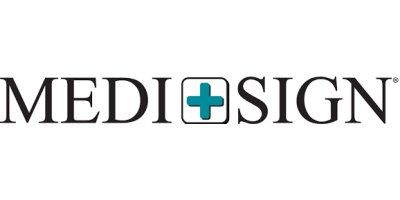

MEDI+SIGN - ANTI-FALL Technology
Smart beds integrate with MEDI+SIGN ANTI-FALL™ technology to alert healthcare staff, patients and families of potential fall risks by sending alerts to the digital whiteboards in the patient’s room, in the hallway and at the nurses’ station. Alerts can range from bed height and bed rail position, to break checks and alarm reminders, and are determined based on the patient’s current fall risk. Patent-pending algorithms use the information in the patient’s electronic health record to detect the patient’s fall risk and other factors, such as ventilation orders, and determine if the smart bed is in its safest position. The ANTI-FALL™ solution streamlines work processes and communicates updated and accurate alerts and information on the status of critical tasks relating to the care of individual patients and their safety.
Patient Whiteboard Room Display
The digital patient room display with ANTI-FALL™ alerts will involve the patient and family in their own care by indicating fall risk status and any unsafe conditions, including bed alarm status, bed rail position, bed height and brake status. If the patient and their family members know about a safety conflict, they have the opportunity to ask the nurse for help and to understand what the conflicts mean and how they can avoid them.
Patient Room Door Display
ANTI-FALL™ alerts are very useful outside each patient room. Any staff member can walk past a room and see if the bed alarm needs to be turned on in that room, or if a family member lowered one of the bed rails, bringing coordination of care to the next level. If the bed alarm is ringing in a patient room, an animated alert displays outside the room, making it obvious that the bed alarm is sounding in that room.
Nurse Station Display
With ANTI-FALL™ technology at the nurses’ station, staff can determine if the patient is in bed or not and if the bed rails are in their safest position according to their assessed fall risk, as well as the bed height, bed alarm and proper bed angle settings. With all patient rooms available at a glance, bed-related safety conflicts have never before been easier to identify.
